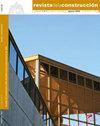高温对PVA纤维增强粉煤灰基地质聚合物砂浆力学性能的影响
IF 1.4
4区 工程技术
引用次数: 9
摘要
本研究制备了一种含有PVA纤维的地质聚合物复合材料,以回收废粉煤灰,获得一种环保的粘合剂。研究了用氢氧化钠活化的F级粉煤灰制备、聚乙烯醇纤维增强的地质聚合物砂浆在高温作用下的力学性能。将通过与粉煤灰、沙子、水和NaOH混合生产的地质聚合物砂浆样品放置在40×40×160mm3的标准模具中。在实验中使用的PVA纤维的体积百分比分别为0.5%、1%和1.5%。对暴露在200°C、400°C、600°C和800°C高温下的砂浆进行物理和机械性能测试。对于未经受高温的试样,与不含PVA纤维的砂浆相比,观察到含有PVA纤维的灰浆的抗压强度增加。另一方面,得出的结论是,与含有PVA纤维的砂浆相比,不含PVA纤维的灰浆的抗压强度损失较小。作为建模的结果,给出最佳弯曲和压缩强度的PVA比率被确定为1.47%。由于PVA纤维在高温作用下熔化,在800ºC温度后,在含有1.5%PVA的样品中测定到83,58%的抗压强度损失。本文章由计算机程序翻译,如有差异,请以英文原文为准。
Influences of high temperature on mechanical properties of fly ash based geopolymer mortars reinforced with PVA fiber
In this study, a geopolymer composite containing PVA fiber was produced to recycle waste fly ash and obtain an eco-friendly binder. Mechanical properties of geopolymer mortars, produced by using F class fly ash which was activated with NaOH (sodium hydroxide), and reinforced by PVA (polyvinyl alcohol) fiber were investigated after high temperature effect. Geopolymer mortar samples produced by mixing with fly ash, sand, water and NaOH were placed in standard molds of 40×40×160 mm3. PVA fibers were used at percentages of 0,5%, 1% and 1,5% by volume in the experiment. Tests were performed on mortars exposed to high temperatures of 200°C, 400°C, 600°C and 800°C for physical and mechanical properties. For the specimens not subjected to high temperatures, an increase in the compressive strength of mortars containing PVA fibers was observed in comparison to mortar without PVA fiber. On the other hand, it was concluded that losses in compressive strength were less for mortar without PVA fiber when compared with the mortars containing PVA fibers. As a result of the modeling, the PVA ratio, which gives the optimum flexural and compressive strength, was determined as 1,47%. As a result of melting of PVA fibers under the effect of high temperature, 83,58% loss of compressive strength was determined in samples containing 1,5% PVA after 800ºC temperature.
求助全文
通过发布文献求助,成功后即可免费获取论文全文。
去求助
来源期刊

Revista de la Construccion
工程技术-工程:土木
CiteScore
2.30
自引率
21.40%
发文量
0
期刊介绍:
The Journal of Construction is aimed at professionals, constructors, academics, researchers, companies, architects, engineers, and anyone who wishes to expand and update their knowledge about construction. We therefore invite all researchers, academics, and professionals to send their contributions for assessment and possible publication in this journal. The publications are free of publication charges.
OBJECTIVES
The objectives of the Journal of Construction are:
1. To disseminate new knowledge in all areas related to construction (Building, Civil Works, Materials, Business, Education, etc.).
2. To provide professionals in the area with material for discussion to refresh and update their knowledge.
3. To disseminate new applied technologies in construction nationally and internationally.
4. To provide national and foreign academics with an internationally endorsed medium in which to share their knowledge and debate the topics raised.
 求助内容:
求助内容: 应助结果提醒方式:
应助结果提醒方式:


